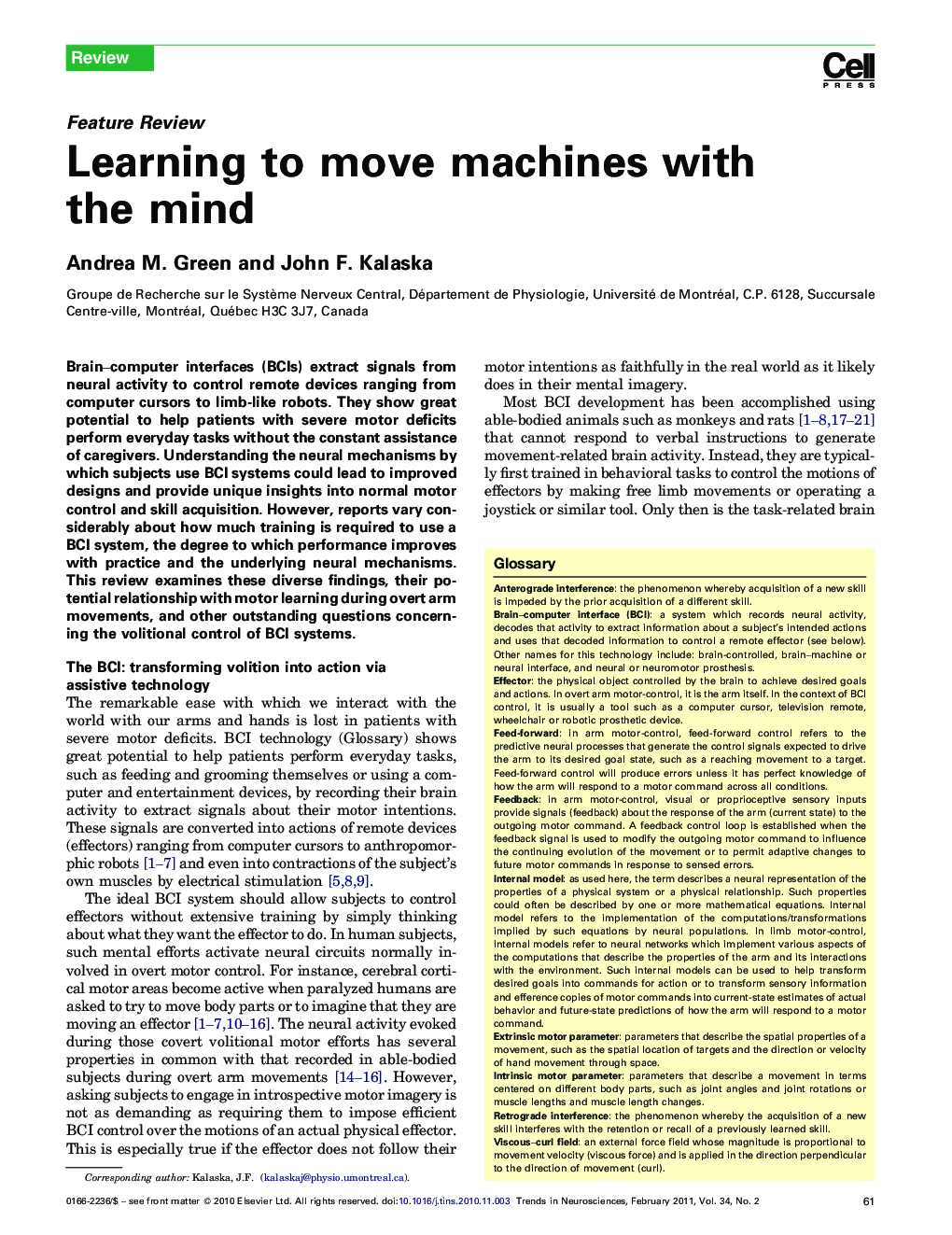| Article ID | Journal | Published Year | Pages | File Type |
|---|---|---|---|---|
| 4354417 | Trends in Neurosciences | 2011 | 15 Pages |
Brain–computer interfaces (BCIs) extract signals from neural activity to control remote devices ranging from computer cursors to limb-like robots. They show great potential to help patients with severe motor deficits perform everyday tasks without the constant assistance of caregivers. Understanding the neural mechanisms by which subjects use BCI systems could lead to improved designs and provide unique insights into normal motor control and skill acquisition. However, reports vary considerably about how much training is required to use a BCI system, the degree to which performance improves with practice and the underlying neural mechanisms. This review examines these diverse findings, their potential relationship with motor learning during overt arm movements, and other outstanding questions concerning the volitional control of BCI systems.
